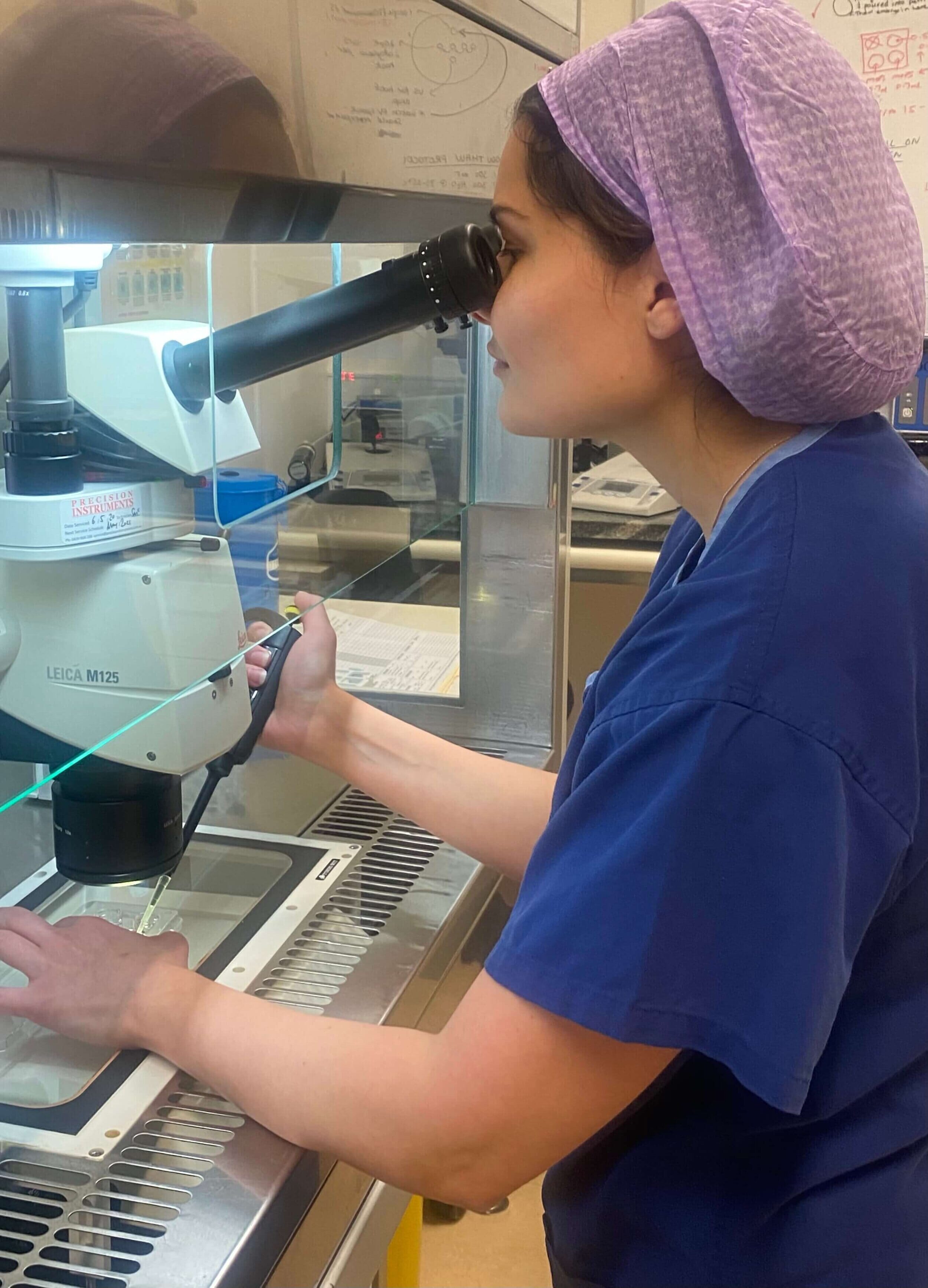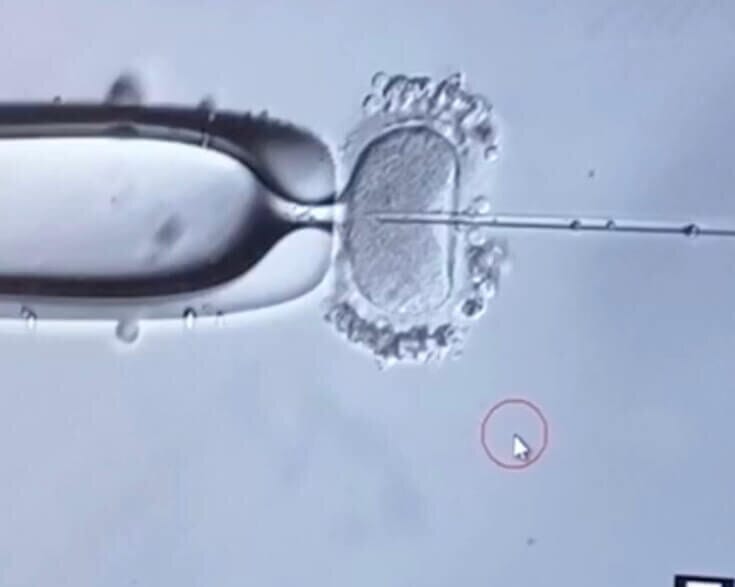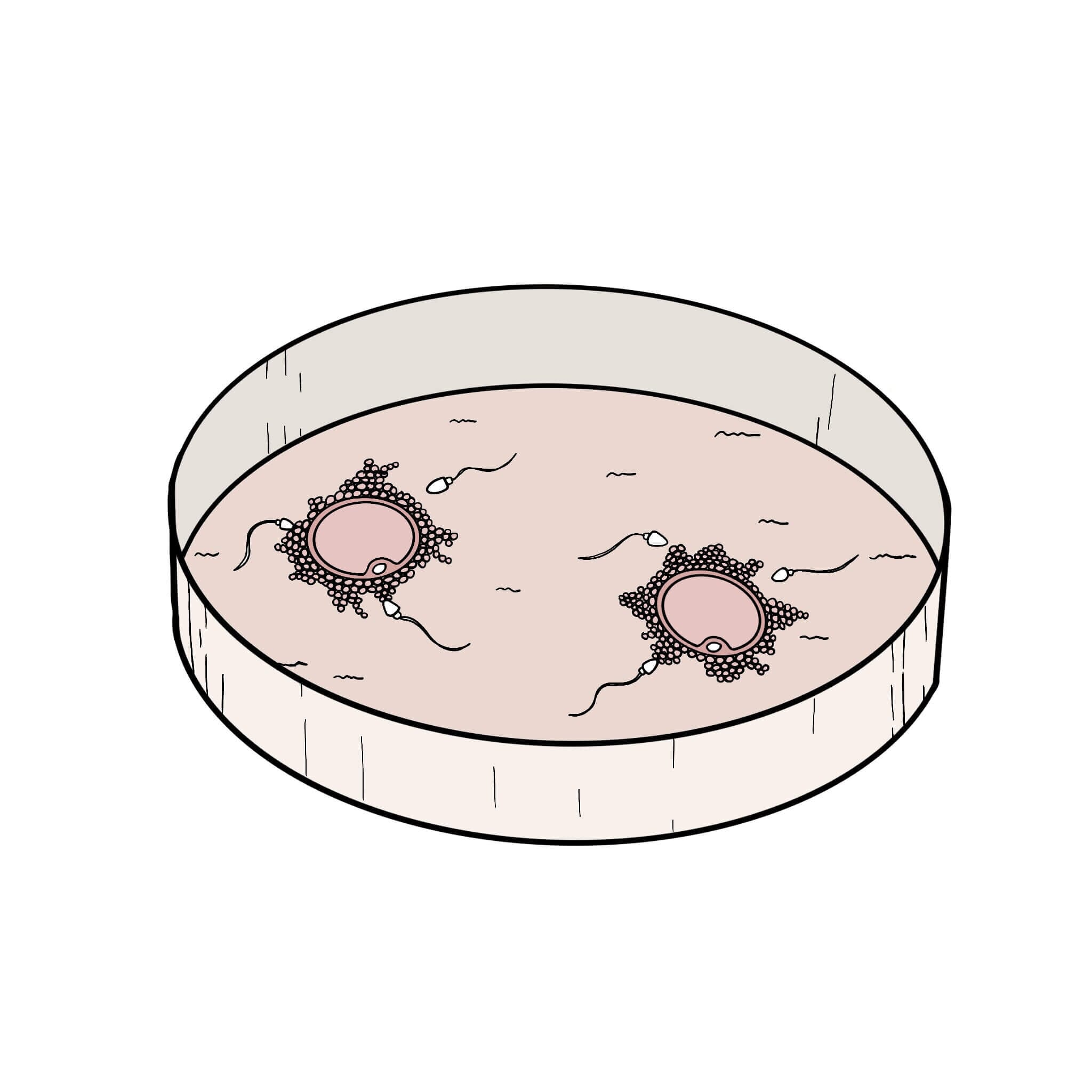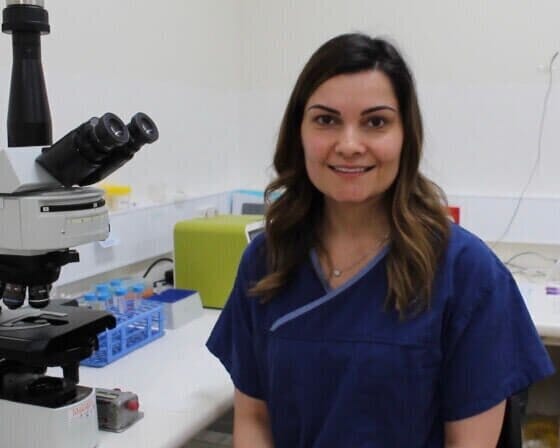As you can probably imagine, an IVF laboratory is a very busy environment. Some clinics are much busier than others based on their size, patient numbers, and the number of procedures scheduled that day, but generally, there are several embryologists attending to the procedures of the day—media preparation, embryo checks/freezes/thaws, as well as patient contact.
Being an embryologist can be a stressful job, as generally there are several hours of procedures each day, followed by multiple other tasks such as the freezing and thawing of embryos, patient contact, and media preparation; and strict witnessing and verification have to occur at each step of the way. As you can imagine, this is not a job where there is room for error.

How is an embryologist’s day spent in the lab?
As an embryologist, the start of the workday can be very early depending on what time the ICSI procedures were performed the day prior. The eggs must be checked for signs of fertilization within a certain time frame, and if the ICSI was done at 12:30pm, the fertilization check must be complete before 6:30am the next day. Usually, we are lucky and get a 7:30am or 8am start time.
Afternoons can go quite late depending on how many eggs there are to ICSI, if any embryos need to be thawed out, or if there are any immature eggs in the ICSI cases. Immature eggs need to be kept and checked at the end of the time frame to see if they have matured and become suitable for injection. Luckily, there are usually several embryologists around, and if someone is coming in bright and early, someone else is happy to stay back and do the later tasks.
Questions Women Are Asking
Starting the day
An embryologist’s day typically starts with entering the lab and turning on all of the heat stages and lights and recording the temperatures of all equipment to ensure everything is working well. We check the diary to see what needs to be done first up. Usually, these are our fertilization checks and the checking of embryos that are about to be transferred. We then choose the best embryo for transfer and place it in a dish with special transfer media. If an embryo is to be thawed, then a dish is made with special thawing media and then pre-warmed until it is time for the thaw. We usually have multiple patients that need fertilization checks and multiple patients that need to be checked for transfer, so this can take some time.
Procedures
While one embryologist is attending to embryo checks and thaws, another is usually setting up for procedures such as embryo transfers and egg retrievals. There may even be another embryologist talking to patients or taking the men through to do their samples. We wait for the nurses and doctors to be ready to call us in for the procedures.

Egg Retrieval
Once the egg retrieval is underway, tubes of follicular fluid are handed to the embryologist. We pour these into dishes and look under the microscope to find the eggs. These get placed in a media similar to what is found in the Fallopian tubes and put aside to be kept warm until all eggs are collected, and then placed into dishes specifically made with the patient’s details. These are then placed in an incubator until later in the day for insemination.
LATESTDec 24, 2025
This Feels Like the Perfect Time to Ditch New Year's Resolutions
2025 was…well, a lot. Especially for women. The manosphere grew. Bodies shrank. Beauty standards became even more exclusive. Speaking of exclusive: DEI programs were... READ MORE
Embryo Transfer
Once we have verified the patient’s details, we go back to the lab to load the catheter with the embryo. This is a skill that takes a lot of training, as it is literally loading a macroscopic object into a very thin floppy tube (like spaghetti) while looking under the microscope! We then take the catheter into the transfer room, where the doctor places it through the cervix, and we very gently plunge the embryo into the uterus. The catheter then goes back to the lab and checked to make sure it’s clear. Embryos do come back occasionally, and this is fine. We just re-load and do it again. We usually have several hours of procedures in the morning and sometimes more in the afternoon as well.
Media Preparation and Other Tasks
A lot of preparation goes into IVF culture systems. Dishes need to be adequately labeled and prepared individually with special media, and there are different types we may need to prepare such as IVF dishes, ICSI dishes, and thaw dishes. These are made the day before as the media has to adequately gas in a CO2 incubator to be at the optimum pH level for the embryos.
After the embryo transfers and embryo checks, there may be embryos that are suitable to freeze. Each patient having embryos frozen will get an embryo cryopreservation sheet added to the file which needs to be completed with all of the embryo and patient details, and special freezing devices need to be labeled individually with unique embryo numbers. When all of the equipment is ready, the freeze is performed and the embryos are placed in storage. Depending on how many patients and how many embryos there are, it can take hours to complete all of the freezing.

artwork by @womanbekind
Insemination
Approximately 4-6 hours after egg retrieval, the eggs need to be inseminated with either IVF or ICSI. The decision on which method is up to the doctor and each couple’s personal circumstances. With IVF, a measured concentration of the washed sperm is placed in each well of the dish and returned to the incubator. With ICSI, the eggs are stripped of their fluffy cumulus cells and checked for a polar body which indicates a mature egg. The mature eggs are injected with a single sperm and returned to the incubator. With either method, signs of fertilization cannot be seen for approximately 16-18 hours.
Finishing the day
After all inseminations and procedures are done, it is the embryologists’ job to make sure everything has been completed, all patients have been spoken to, and everything is ready for the following day. There may be thaws to do for the following day, or we may need to stay back and wait for eggs to mature. When everything is complete, we close up the lab, say goodnight to the embryos, and leave for the day.
Being an embryologist is an incredibly rewarding job, and I am so passionate about what I do. As you can see, it is a very busy job, but every day is different and it never gets boring! I absolutely love talking to patients, being a part of their embryo transfer, or talking them through their embryo development and the concerns they have along the way. I know that IVF is an incredibly challenging part of a person’s life and that no one actually wants to be there, but I feel privileged to be able to do what I can to make it as much of a positive experience as possible.




.jpeg)



.jpeg)

.jpeg)

.jpeg)




.webp)





